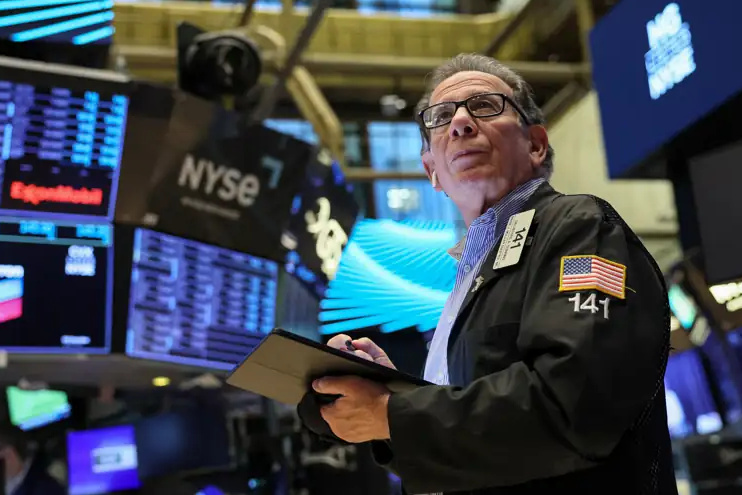(New York) The New York Stock Exchange ended its first session of the year in disorganized fashion, driven by profit-taking which particularly hit the technology sector, while defensive stocks resisted.
The Dow Jones gained 0.07%, the NASDAQ index dropped 1.63% and the broader S&P 500 index dropped 0.57%.
The NASDAQ had not lost this many points in one session for more than two months.
The session was poorly oriented by a lowering of recommendation by a Barclays analyst on Apple (-3.58%), justified, according to him, by disappointing sales of iPhone 15.
In one trading day, the Apple firm erased more than $100 billion in market capitalization.
This drop comes at a time when the stock had already performed less well than those of its major rivals, partly due to a lack of announcements in the very promising artificial intelligence (AI) segment.
On Tuesday, many investors also offloaded shares of ASML (-5.28%), a Dutch company which benefits from a listing in New York.
The Dutch authorities have banned the export to China of certain models from the specialist in machines essential for the manufacture of the most advanced semiconductors.
In the process, the entire microprocessor industry waltzed, from AMD (-5.99%) to Intel (-4.88%), via Nvidia (2.73%), Qualcomm (-3.04%) or Broadcom (-2.77%).
Operators have chosen to take their profits on these stocks which made the heyday of Wall Street last year.
Tech, but also the stock market in general, has also suffered from the rise in bond rates. The yield on 10-year US government bonds stood at 3.93%, compared to 3.87% at Friday’s close.
The mood was also darkened by a disappointment in the two macroeconomic indicators of the day, namely construction spending in November and the activity index of the American manufacturing sector for December.
“This is consistent with the scenario projected by most people, which is that of an (economic) slowdown, but the market is moving at too high an altitude currently,” commented Jack Ablin, of Cresset Capital.
For the analyst, Monday’s movement corresponds to an ebb which could last a few days.
“We expect a small adjustment, time to bring investors back to earth,” he said. “We don’t believe in a fall, just a moderation of general enthusiasm. »
The New York market thus remains on nine consecutive weeks of gains and the S&P 500 came close to its session and closing records on Thursday.
Tuesday’s turbulence worked in favor of so-called defensive values, that is to say theoretically less sensitive to the economic situation, many of which remain in a contrasting year 2023.
The biotech Amgen (+3.25%), the Merck laboratory (+3.87%) and the health sector equipment group Johnson & Johnson (+2.06%) performed well, bringing back the Dow Jones in the green shortly before the close.
Still in the medical sector, Moderna (+13.12%) was catapulted by a positive note from Oppenheimer, which sees the laboratory launching several new products in the coming months, which could boost turnover from 2025.
Elsewhere on the stock market, Tesla remained firm (-0.02%) after reporting deliveries up 38% year-on-year in the fourth quarter of 2023 and above expectations.
They are nevertheless lower than those of its Chinese competitor BYD, which thus becomes, in fact, the world’s leading manufacturer of electric vehicles.
BYD’s Chinese rivals listed on Wall Street, NIO (-7.17%) and XPeng (-3.77%), also suffered the blow, as did the American Rivian (-10.06%), whose Deliveries fell by 10% from one quarter to the next.
Toronto Stock Exchange
The Toronto Stock Exchange lost nearly 100 points late Tuesday morning for its first session of the year. Wall Street is also tinged red.
The S&P/TSX composite index on the Toronto floor fell 87.54 points to 20,870.90 points.
On the currency market, the Canadian dollar was trading at 75.11 US cents, down from its average rate of 75.61 US cents on Friday.
The Canadian Press
